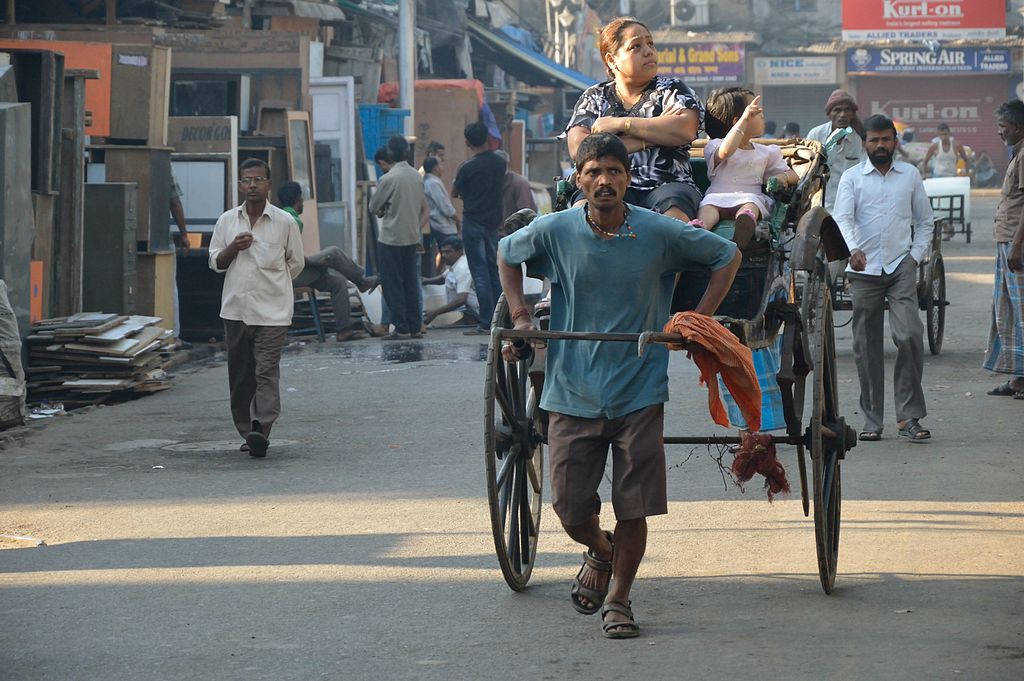The Commuter
Privileged Nostalgia: On Hollywood, Perception, and the Quest for Authenticity

Privileged Nostalgia: On Hollywood, Perception, and the Quest for Authenticity
ESSAY: PRIVILEGED NOSTALGIA, BY MEGHA MAJUMDAR
The idea of nostalgia comes to us not from poetry but from medicine. A seventeenth-century Swiss student called Johannes Hofer coined the word in his dissertation, naming what was then thought to be a disease: “the sad mood originating from the desire for return to one’s native land.” Nostalgia’s early victims included students from the Republic of Berne studying in Basel, and Swiss soldiers fighting abroad. To treat it, one could apply leeches, or journey to the soothing air of the Alps. The best cure of all was return to the homeland.
Modern comprehensions of nostalgia are less concerned with bodily illness, or with homelands, than with the movement of history. Now, we long not for places, but for places in a historical moment, fleeing as if we were viewing them in a train window.
It was in the nineteenth century that the past began to be institutionalized. Towns erected museums and memorials. In these structures, nostalgia expanded from personal longing to public tradition of salvage. Our past became intimately known at the same time as it was rendered inert: the beginning of heritage.
In an A Public Space essay on returning to his hometown, Kolkata, Jai Chakrabarti wanders about the developing city. “I notice,” he writes, “which of the older buildings have become new malls, which of the sweet shops known for their condensed milk squares have now been replaced by modern confectionaries or worse, a Baskin-Robbins.” In the sparse audience at a play, he mourns the empty theater, a venue and form of art banished to obscurity by a crowd committed, so he claims, to 3-D thrills.
Nostalgia, now, is rebellion against that fraught and beloved idea, progress.
•
In my childhood, Hollywood films played at three cinema halls in the city of Kolkata. Grand destinations of the British era — marble staircases, red curtains which parted before the screen — these theaters sought contact with a world of which, we already knew as children, we occupied a filthy periphery. We were still a colony, in thrall to the west. Even the names of the cinemas declared it: Lighthouse, New Empire, Globe.
With the obsessions of a colonized people taught that we were unclean, we noticed the cleanliness and comfort of the west. On screen, the streets of America were so pristine that people could come home and jump into bed with shoes on. Americans had silent, efficient machines for everything — curling hair, cleaning carpets, chopping onions, washing clothes. We had nasal-voiced maids who slapped and punched our worn garments on the bathroom floor as if on riverside rock, after which we clipped dripping dresses, in summer, winter, and monsoon, to ropes strung from the verandah.
Our lives were terribly unsophisticated, even coarse. The lanes flooded every July, drowning roaches whose brown shells floated in the water. In all seasons, beggar children touched our elbows and whined with upturned palms until we gave them a rupee, and uncles on the minibus pinched our breasts.
So when the accoutrements of America, as we understood it — malls, multiplexes, Baskin-Robbins, 3-D movies — began to migrate to our city, how could we not be delighted? Our city was joining the rest of the world, and it was an aspiration shared by all. (This continues to be true — the state’s current chief minister’s ambition is to turn Kolkata into London.)
With familiarity tipped over into disdain (“worse, a Baskin-Robbins”), Chakrabarti dismisses his own luxurious acquaintance with ice cream upon ice cream devoured, until one day the cone was no longer coveted. Even the memory of its having been coveted became an embarrassment. But in order to disregard the restorative wonder of coming in from a hot city to a cool, clean shop, and the peace of purchasing a scoop, one has to forget how corrosive life can be in the city.
•
Complaints about missing sweet shops or changing architecture are, in the end, complaints about inauthenticity. What these grievances betray is a wish to feel the city textured by a time now gone, a time in which one had moved through the city and, recalling it, felt it, or oneself, as one feels verse. It is a wish to have an authentic experience that is also poetic.
Here is an authentic experience.
A lean man pumps his legs to draw you, in a rickshaw, up the lanes of a neighbourhood. The vehicle, an overgrown tricycle, has no suspension to speak of, so every pothole and speedbump launches a jolt to your spine. No matter. This is the common mode of transport in the interior of residential districts, and it costs little. When you climb off, backbone freshly aligned, you hand the man twenty rupees. He glances at the note. He says the fare is twenty-two.
Twenty-two? Just last week it was twenty.
The man grows irritated. He demands that you ask anybody, you ungrateful passenger, or says nothing at all, looking squarely ahead until you give in. And you do give in, but not without a sour feeling of being cheated. Rickshaw fares are written nowhere. There are no meters. The system is rigged against the passenger. But you look at this man, his muscled calves, cloth pants hitched to his knees. You recall the sweat on his back as he leaned forward to pull you up a slope, and in haggling with him over two rupees, you come to feel not only that you are being cheated, but that you are cheating him, too.
Being middle class in Kolkata means this and a dozen moral struggles every day. The hardships of individual life are made flint by class friction. They ignite, over and over, in public encounter.
This is authentic life, though it is not the poetic authenticity in which one feels uplifted rather than beaten down. But many cities around the world, like Kolkata, are dense with the small indignities of daily life. In these places, the romance of such authenticity is a joke.
Juan Villoro’s short story “Amigos Mexicanos” takes this joke to an extreme. In this story, a foreign journalist visits Mexico, and his chosen guide wonders how to give him a satisfying experience: “He wanted a reality that was like Frida’s paintings, ghastly but unique.”
So he takes him to a restaurant:
I’d chosen the restaurant carefully; it was perfect for torturing Katzenberg. I knew he’d thank me for taking him to a genuine locale. They were blasting ranchera music, the chairs had that toyshop color-scheme we Mexicans encounter only in “traditional” joints, there were six spicy salsas on the table and the menu offered three kinds of insects. All calamities picturesque enough for my companion to suffer them as “experiences.”
None of this really works. Finally, the journalist is kidnapped, and this, we learn,
immersed Katzenberg in the reality he so yearned for. Katzenberg had lived it as something indisputably true: his days in captivity were devastatingly authentic.
The visitor, like Katzenberg, yields to the cruelties of a place as enlightening. But the nostalgic is wary of the city’s thorny edges. If the nostalgic returns, a condition of his return is that he will leave. In his brief moments there, like Chakrabarti, he desires the city in its historical image, its charms preserved. The nostalgic wants, most of all, to observe the city’s beauty as unquestioned champion over the daily exhaustions that plague its people.
•
The first mall in Kolkata was called Forum. It was located opposite a house where a twentieth century Indian nationalist once lived. We never summoned the will‚ — we should, we should — to visit Subhas Chandra Bose’s house, but we flocked to Forum often enough that the mall authorities began to refuse entry to children in school uniforms.
At the mall, we did nothing, really. We rested in the cool air and ate cookies, separated for an hour from the streets in which we tucked each other’s bra straps, if they showed, back under blouses.
How can you begrudge us that?
If authentic life, in the end, encompasses beautiful architecture or the quaintness of men who work as blade sharpeners, carrying their tools around the neighbourhood on afternoons when only housewives are home, then it also encompasses how the old houses are cracking, plants growing in their walls, while their owners grow feeble and the heirs prosper in Singapore. If authenticity is about a blade sharpener, then it is, also, arguing with the blade sharpener over why he has given you a torn banknote, which nobody will accept.
Now that it is yours, though, you have to slyly slip it into a bunch of notes to hand a shopkeeper. If he spots it, he will return it, and you will both know what you have tried to do. But this is how it works. This is how the note goes, once more, into circulation.








